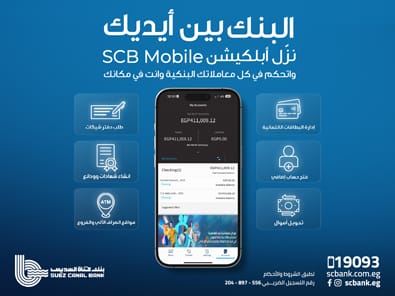Achieving effective content personalization requires more than just basic data collection; it demands a comprehensive, technically precise approach that integrates advanced data handling, segmentation, automation, and machine learning techniques. This guide delves into the intricate, actionable steps necessary to implement a mature, data-driven personalization system that delivers real value, minimizes pitfalls, and scales seamlessly across channels.
Table of Contents
- Understanding Data Collection Methods for Personalization
- Data Segmentation: Building Precise Audience Profiles
- Developing a Data-Driven Content Personalization Workflow
- Technical Implementation: Integrating Personalization Engines
- Applying Machine Learning for Predictive Personalization
- Testing, Optimization, and Avoiding Common Pitfalls
- Case Study: Step-by-Step Implementation of a Personalization Campaign
- Reinforcing the Value of Deep Technical Personalization and Broader Strategy
1. Understanding Data Collection Methods for Personalization
a) Implementing Advanced Tracking Pixels and Cookies
To gather granular behavioral data, deploy server-side tracking pixels instead of relying solely on client-side JavaScript snippets. These pixels should be embedded within key interaction points, such as post-login pages, checkout flows, and content views. Use first-party cookies with a long expiration (e.g., 1 year) to persist user identifiers, enabling cross-session tracking.
For example, implement an __session_id cookie that remains consistent across visits. Use cookie attributes like Secure and SameSite=Strict to enhance privacy and security. Use tools like Google Analytics 4 with custom events to capture detailed user interactions.
b) Integrating Behavioral and Contextual Data Sources
Leverage multiple data sources such as:
- Session data from server logs and session management tools.
- Interaction data from event tracking (clicks, hovers, scroll depth).
- Contextual data including device type, geolocation, time of day, and referrer URL.
- CRM and third-party data for enriched profiles.
Implement real-time APIs to sync behavioral signals with your content management system (CMS), enabling dynamic content adaptation based on current user context.
c) Ensuring Data Privacy and Compliance in Collection Practices
Use GDPR and CCPA-compliant methods:
- Implement transparent consent banners that clearly specify data collection purposes.
- Offer granular opt-in options for tracking categories.
- Use server-side tracking to minimize third-party cookie reliance.
- Regularly audit data collection practices and ensure secure storage.
“Data privacy is not just compliance; it’s a core component of trust in your personalization strategy. Always prioritize user consent and data security.”
2. Data Segmentation: Building Precise Audience Profiles
a) Defining Micro-Segments Based on User Behavior Patterns
Start by analyzing raw event data to identify micro-behaviors, such as:
- Time spent on specific content types.
- Frequency of visits within certain periods.
- Action sequences indicating purchase intent.
Use SQL queries or data processing tools like Apache Spark to segment users into clusters such as “Browsers of high-value content” or “Abandoned cart initiators.”
b) Utilizing Clustering Algorithms for Dynamic Segmentation
Apply algorithms like K-Means, DBSCAN, or Hierarchical Clustering to group users based on multidimensional behavior data:
| Algorithm | Use Case | Strengths |
|---|---|---|
| K-Means | Segmenting users into fixed clusters based on Euclidean distance | Efficient with large datasets, easy to interpret |
| DBSCAN | Discovering clusters of arbitrary shape and identifying outliers | Good for noise-sensitive data |
| Hierarchical | Creating nested segments for layered personalization | Flexible and interpretable |
c) Creating Actionable User Personas from Data Insights
Translate clusters into detailed personas:
- Profile attributes: demographics, device types, preferred channels.
- Behavioral traits: content preferences, purchase triggers, engagement frequency.
- Goals and pain points: mapped from interaction sequences and feedback.
Use tools like Tableau or Power BI to visualize these personas, ensuring marketing and content teams can operationalize them into targeted campaigns.
3. Developing a Data-Driven Content Personalization Workflow
a) Mapping Data Inputs to Content Delivery Systems
Design a middleware layer that ingests user data from your data lake or warehouse (e.g., Snowflake, BigQuery) and maps it to your CMS or content delivery platform (e.g., Contentful, Adobe Experience Manager).
Establish a schema where user segments, preferences, and behaviors are stored as attributes linked to session IDs, enabling real-time lookup.
b) Automating Content Personalization Triggers Based on User Actions
Implement event-driven architecture:
- Use message queues like Apache Kafka or RabbitMQ to listen for user interactions.
- Create rules engines (e.g., Drools) that evaluate conditions such as “user viewed product X > 3 times within 24 hours” to trigger personalized content delivery.
- Embed these triggers into your content platform via APIs, so content updates dynamically upon condition fulfillment.
c) Establishing Feedback Loops for Continuous Data Refinement
Set up automated pipelines to:
- Aggregate real-time engagement metrics (clicks, conversions).
- Update user profiles and segments accordingly using ETL workflows (e.g., Apache NiFi).
- Re-train machine learning models periodically to incorporate fresh data, ensuring adaptive personalization.
4. Technical Implementation: Integrating Personalization Engines
a) Choosing and Configuring Personalization Platforms (e.g., Dynamic Content Tools)
Select platforms like Optimizely, Adobe Target, or open-source solutions such as Varnish. Focus on:
- Support for real-time APIs and rule-based content delivery.
- Compatibility with your tech stack and data infrastructure.
- Built-in machine learning or recommendation modules.
Configure platform SDKs and APIs to connect with your data sources, ensuring seamless data flow.
b) API Integration for Real-Time Data Processing
Implement RESTful or GraphQL APIs to fetch user segments, profiles, and contextual data at page load or interaction points. For example:
fetch('/api/user-profile?session_id=xyz')
.then(response => response.json())
.then(data => {
// Use data to customize content
});
Ensure low latency (< 100ms) to support a seamless user experience.
c) Building Custom Middleware for Data Handling and Content Delivery
Develop middleware in your backend (Node.js, Python, etc.) that:
- Aggregates data from multiple sources.
- Applies business rules or ML inference results.
- Serves personalized content snippets via APIs to your frontend.
“Building robust middleware ensures your personalization logic remains flexible, scalable, and maintainable—crucial for complex, evolving content ecosystems.”
5. Applying Machine Learning for Predictive Personalization
a) Training Models on User Data for Behavior Prediction
Use labeled datasets to train models such as Gradient Boosting Machines or Neural Networks to predict likelihoods like:
- Churn probability.
- Product interest.
- Content engagement propensity.
Implement training pipelines using frameworks like TensorFlow or Scikit-Learn, with data regularly refreshed from your data warehouse.
b) Implementing Recommendation Algorithms (e.g., Collaborative Filtering, Content-Based)
Deploy algorithms such as:
- Collaborative Filtering — recommend items based on similar users’ preferences.
- Content-Based — recommend items similar to those a user has previously interacted with.
- Hybrid models combining both approaches for robust predictions.
For example, implement matrix factorization techniques with SVD or neural collaborative filtering architectures, then serve recommendations via API endpoints integrated into your content platform.
c) Monitoring and Tuning Machine Learning Models for Accuracy
<p style=”font-size: 1.
الرابط المختصر: https://propertypluseg.com/?p=152672






















